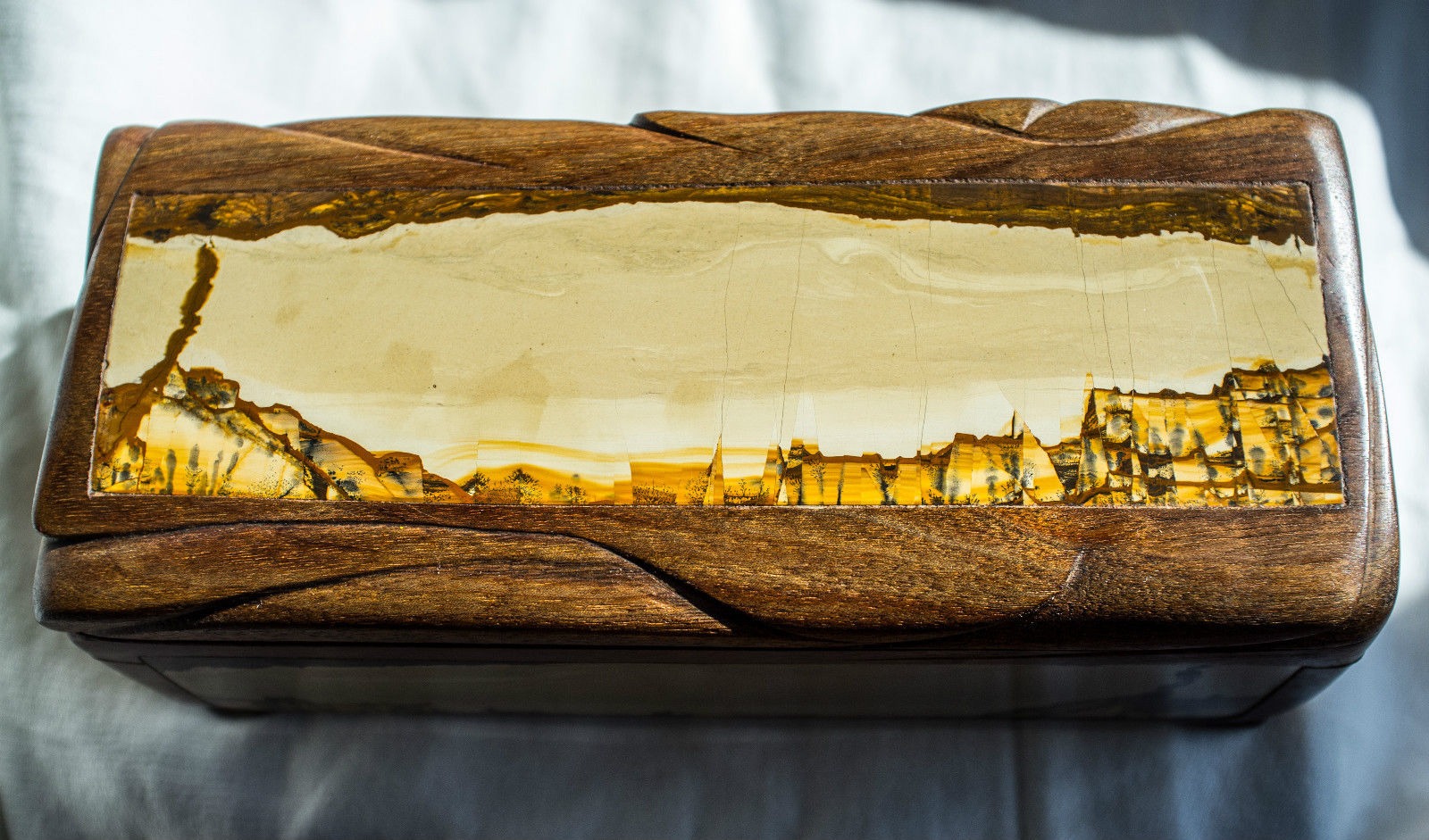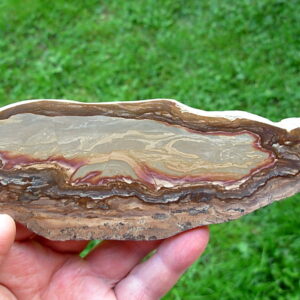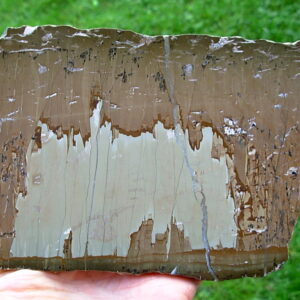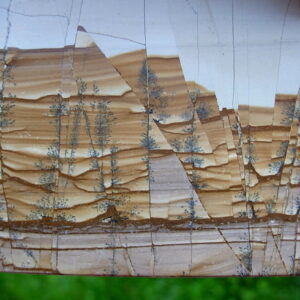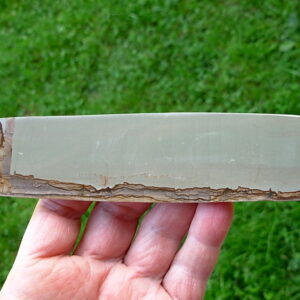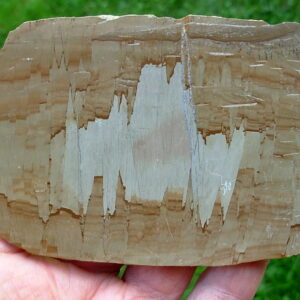Paesine/ Pietra Paesina
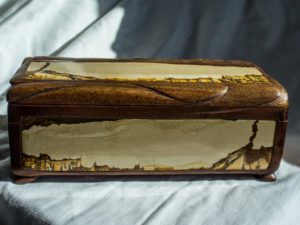
It is a sedimentary stone mainly made of compressed limestone and clay that was formed in sea beds with infiltrations of iron and manganese hydroxide which create the different colors with light grey from the limestone, reddish-brown from iron oxides and manganese provides black and blue for the clay. You may even find crystalline or calcite inclusions and dendrite patterns if you are lucky. The best quality, color and patterned Paesina Stone comes only from the hills around the city of Florence, and in the Rock and Mineral World is sometimes referred to as "Pietra di Firenze"(Florence stone).
This is a highly sought after, but rarely found stone for jewelry, furniture inlay and decorator drawer pulls, architectural accents and it is especially prized by rock and mineral collectors.

"Paésine" the stone is a variety of limestone alberese found in Italy in the Northern Apennines and the mountains of Morello, Silla and Santa Fioria , which is the most extraordinary case of " figurative stone" of the family limestone. This rock is also known as marble or limestone ruiniforme , landscape stone or Florentine marble.
Sawn and polished successive tranches with different designs for each section, the Paésine ruiniform evoke landscapes. Green , blue or gray suggest the sky and the sea, brown veins houses, castles, towers , dungeons and ramparts, churches and villages in ruins or shores, cliffs and caves. In general, limestone is affected by coloring mainly in peripheral areas and the most intense chromatic alterations often do not reach the inner part which, with its shades of various shades of blue gray, evokes images of skies and bodies of water.
Although some finds have occurred in other places in Italy, the Pietre Paesine that comes from the Florentine hills is universally recognized as unsurpassed for quality and beauty. Rich in colors, they reproduce stormy seas, islands, volcanoes, canyons, ruined cities, hills, caves and mountains, evoking the tones and colors of Tuscany, as if to remember that in this land, cradle of the Renaissance, which gave birth to great artists such as Leonardo da Vinci, Giotto, Michelangelo, even the stones have "breathed art".
The " Pietra Paesina " aroused the admiration of lovers of natural curiosities offices in the Renaissance. The Medici decorated their Italian firms with inlays or inclusions in hard stones that was done by Florentine artisans. The Paésine were sometimes painted their fantastic decor background for these tables of stone seventeenth and eighteenth centuries , This stone is very popular with collectors.
All Photos taken in the shade outdoors in natural sunlight on a partly cloudy day with a Nikon Coolpix L1 Camera.
-
Pietra Paesina 120g Slab Polished Face from Italy
$128.29 Read more -
Pietra Paesina 269g Slab Matte Face with Crystalline Vein from Italy
$146.37 Add to cart -
Pietra Paesina 42g Slab Matte Face from Italy
$78.45 Read more -
Pietra Paesina 89g Slab Matte Face from Italy
$88.30 Read more -
Pietra Paesina 94g Slab Matte Face from Italy
$103.05 Read more

